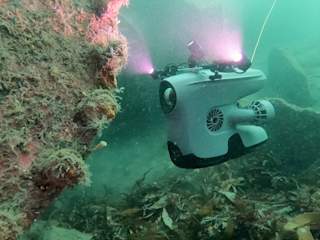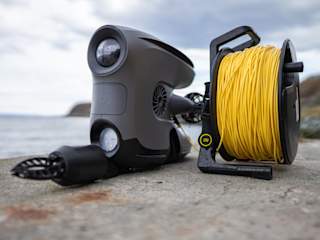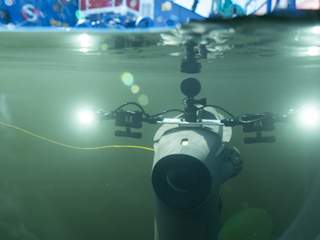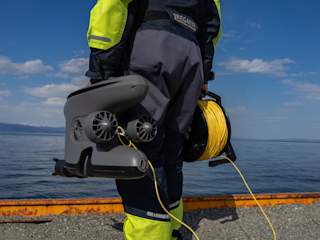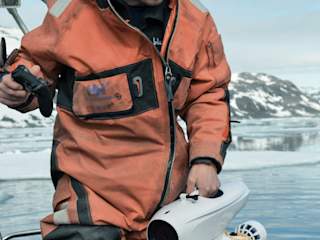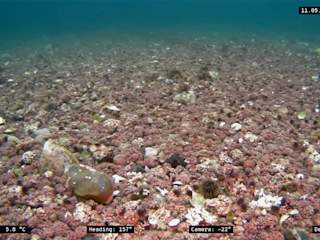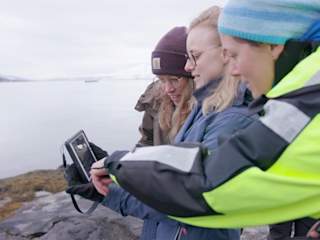Get access to unreachable places
One of the most significant benefits of small ROVs is that they can reach areas that are both problematic and high-risk zones for humans to enter. For example, with mini ROVs, students and researchers at UiT can collect valuable data from under the sea ice in dark conditions & without entering the freezing water. Professor Jørgen Berge also explains that surveying with ROVs makes the underwater world more accessible, especially in the intertidal and shallow zones.
These tools are essential; they open up a new world for the students.
- Jørgen Berge, Professor in Marine Biology, UiT.

Jørgen Berge is a diver as well as a Professor in Marine Biology. He has operated Blueye ROVs for quite a while and says that while using underwater drones cannot replace being in the water yourself; it's the next best thing. The low weight and ease of operation make the Blueye drone an excellent tool for everyday use and empowers students to lead on research projects.
Instant camera footage
In the Arctic and Marine Biology department of UiT, you'll find Emily Venables. She is an engineer with a passion for the underwater world and often takes her students out for fieldwork to observe the local ecology. At Sydspissen, the southern tip of Tromsø Island, they are studying the intertidal zone. With Blueye, they get instant camera footage, the students can connect their phones to the Surface Units' WiFi, and everyone can view the underwater footage on their screens. ROVs make it easy to collect accurate data and observe live animals in the sea!

The most exciting dive I have had with the drone was at Engenes. We had it down at 300m, and we saw deep-sea corals. It was fascinating to have such a clear image so deep and so quickly.
- Emily Joanne Venables, Marine Robotics Engineer, UiT.
The high-quality visual presentations from Blueye underwater drones can be shared in collaboration with multiple stakeholders on several devices and even broadcasted online. This feature expands their reach into the underwater world. Read how you can live stream to meetings in Microsoft Teams.
The Blueye X3 underwater drone as a sensor-carrying platform
Jørgen, together with other researchers (NTNU), has performed significant fieldwork at Svalbard. Before acquiring Blueye ROVs, they had to dive into the icy waters physically, but now ROVs have improved the way they collect data. Researchers are moving away from manual investigation for sampling, and towards more technologically advanced platforms like ROVs & AUVs (autonomous underwater vehicle). These tools allow for different research strategies, repeatability of the sampling, more access to undersea environments, and multiple surveys with multiple vehicles have been essential for data collection. It provides more access, gives them more data, and makes it more efficient.
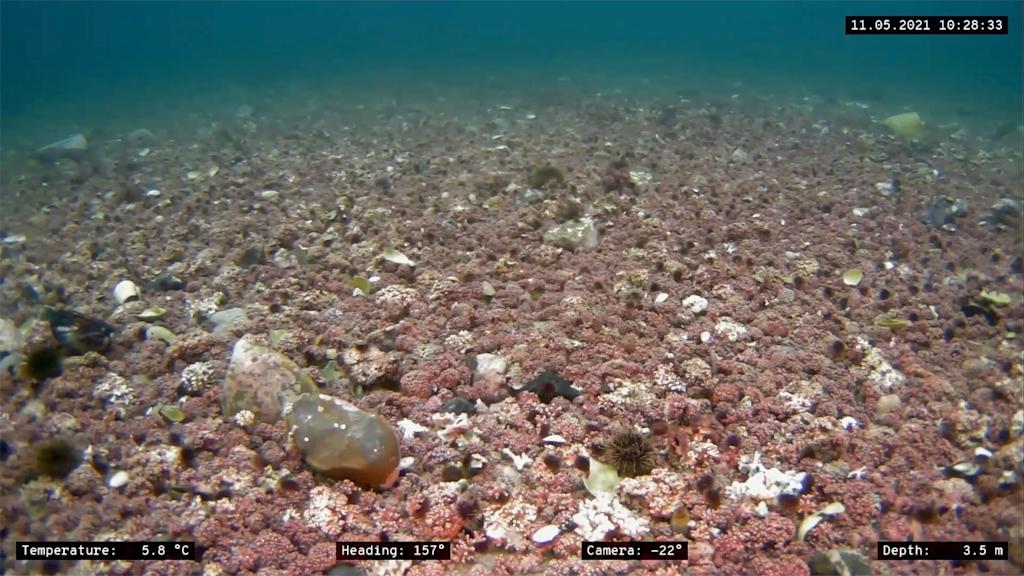
The newly launched Blueye X3 underwater drone allows researchers to plug in external equipment such as sensors and grabbers – Blueye is no longer just a camera unit. The X3 is a sensor-carrying platform that will increase data collection & accessibility in the subsea environment.
ROVs can operate in complete darkness, which gives researchers a different and essential perspective and view of the organisms they study. The Blueye X3 will provide us with the same opportunity as large vehicles, says Jørgen.

Compared to divers, the X3 will give us more access, more data and make the surveys more efficient. It is also a safer alternative when we dive under the sea ice in dark conditions.
- Jørgen Berge, Professor in Marine Biology, UiT.

